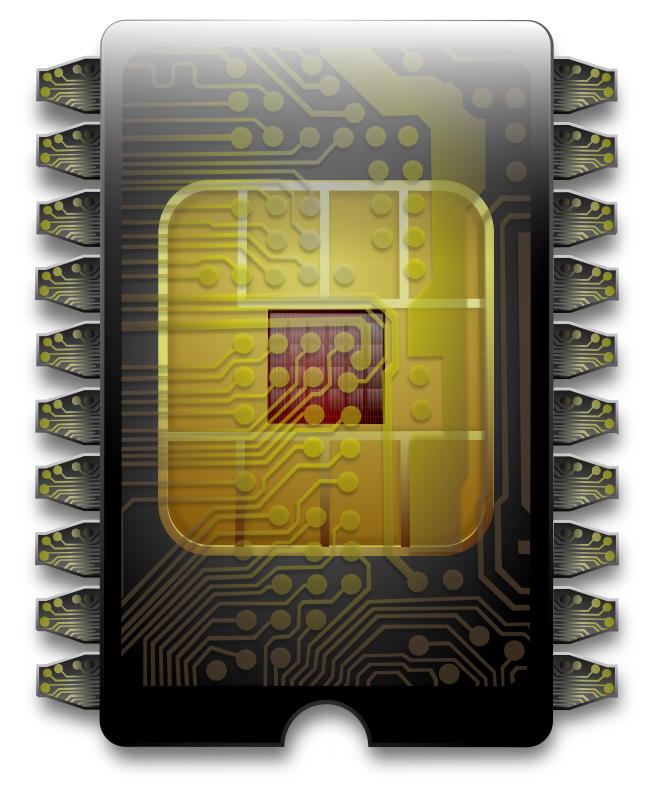Real-World Examples of Information Technology in Action
Information technology is now a key player in digital growth, changing how businesses work and connect with people. It has moved from a helper to a main source of progress and new ideas. By bringing in mobile devices, cloud computing, and better communication tech, it has changed our lives at work and home.
The launch of the iPhone in 2007 started a major shift towards mobile use, now with over 3.5 billion users of smartphones across the globe. Also, Wi-Fi, starting in 1997, changed how we use the internet everywhere. Looking into these examples helps us see how tech boosts work efficiency and improves how we talk to customers digitally.
Introduction to Information Technology in the Modern World
The term information technology first came into use in 1958, thanks to the Harvard Business Review. It’s now a big part of our daily lives, changing how businesses work and connect with customers. Organizations depend on technology to run smoothly, make things more efficient, and improve communication.
The world of digital tech has grown a lot, affecting both work and personal spaces. Devices now go far beyond just PCs, linking up in a huge network. This change makes things run smoother, automates tasks, and gives us data instantly. It helps businesses make smart choices and boosts productivity.
Handling data is central to what businesses do, affecting products, marketing, and sales. With more reliance on software, there’s a need for skilled programmers to make bespoke apps. Help desk teams are crucial too, fixing tech issues, keeping things running, and supporting users.
Nowadays, businesses can’t ignore IT governance, which means setting up rules for better performance. Cybersecurity is also vital to protect data against threats. IT teams work with others to fix tech problems, with jobs like network admins and support techs playing a part.
Information technology keeps evolving, bringing new ways to solve problems and encouraging innovation. As businesses adopt a digital-first approach, they must upgrade their skills to stay ahead in a connected world.
| Aspect | Impact |
|---|---|
| Efficiency | Streamlines processes and automates tasks |
| Communication | Facilitates interaction across locations and time zones |
| Data Processing | Essential for decision-making and product development |
| Innovation | Promotes platforms for creative expression and problem-solving |
| Security | Addresses cyber threats to protect sensitive information |
| Employment Growth | Diverse roles are emerging to meet demand in the sector |
Key Aspects of Digital Transformation
Digital transformation is key for businesses moving through today’s complex markets. It’s not just a trend but a must-have to improve and keep up with a digital world. Companies must change how they work to respond better to what customers want and market shifts.
Understanding Digital Transformation
Digital transformation changes how companies run. They must look at their current ways of working, finding old methods that don’t work well anymore. The COVID-19 pandemic made this even more important, pushing companies to serve customers who prefer digital options. For example, healthcare has started using telemedicine, and hotels now let guests check in online.
The Role of Technology in Business Development
Technology is central to business growth. It lets companies use things like cloud computing and machine learning to get better. Yet, there are hurdles, like limited budgets and people not liking change. Stay up-to-date with tech to avoid falling behind. Adapting to new customer habits, like using online services, is key for the future.
Improving how customers feel and interact with us is crucial in digital transformation. Deloitte’s research shows many companies struggle to get the results they hoped for from digital efforts. Effective digital change means making new technologies a core part of how we work every day.
| Aspect | Description | Examples |
|---|---|---|
| Customer Experience | Enhancing user interaction through digital platforms | Target App, Lemonade’s online portal |
| Operational Structure | Redesigning the framework for improved efficiency | Cloud migration, IoT in manufacturing |
| Business Processes | Streamlining processes to be more responsive | Online grocery shopping, remote selling in B2B |
Real-World Examples of Information Technology
Information technology (IT) has reshaped many industries. Digital tools help businesses become more efficient and innovative. You can see IT’s effects in healthcare and retail, where it’s changed old ways of doing things.
Impact of Information Technology on Various Industries
In healthcare, technology like telehealth lets doctors talk to patients far away. This means better care for more people. Retail has also changed. Now, you can shop online easily thanks to e-commerce. Everyday store operations are smoother with systems that process sales quickly.
Adoption of Cloud Technology in Businesses
Cloud technology is key for keeping up in today’s fast world. It lets businesses handle costs better. Companies can be more flexible and use data analytics by using less on-site IT. Cloud tech is a big part of modern business plans.

IT is now crucial in how we do business. It’s important for businesses to use new digital tools. Knowing how IT changes things can help them choose the best new ideas. For more on IT’s big role, check out this helpful article.
What are examples of information technology
Examples of information technology are found all around us. They transform how sectors operate. Companies gain from better efficiency and service. They follow systematic studies for improved compliance. These examples show the big impact of IT advancements.
Case Study: Coronis Health and Process Documentation
Coronis Health used IT to boost their efficiency. They introduced Scribe for recording processes. This led to saving time and better accuracy. Their story shows the power of IT in healthcare.
Case Study: Adobe’s Shift to Subscription Model
Adobe switched to a subscription model thanks to IT. This ensured customers always had the latest updates. It’s a move that improved Adobe’s services and innovation. Adobe now makes smarter decisions based on data.
Emerging Technologies Shaping Our Future
New technologies are changing the world, especially with artificial intelligence (AI) and the Internet of Things (IoT). These changes are making work easier and opening doors for new ideas and growth.
Artificial Intelligence Applications
Artificial intelligence is at the forefront, with tools like ChatGPT deeply impacting how businesses operate. Since November 2022, more companies are using AI for better customer service, smart predictions, and quicker decisions. Machine learning, especially automated machine learning (AutoML), is simplifying tasks such as cleaning up data. This makes things more efficient. By 2032, AI combined with managed IT could grow the market to over $520 billion. This shows nearly 8.1% growth each year from 2024 to 2032.
The Internet of Things and Its Real-World Applications
The Internet of Things is changing many industries by using connected devices. With the introduction of 5G networks, IoT devices work faster, improving services in healthcare and production. Edge computing is essential for handling the huge amounts of data from these devices. It allows for immediate data handling and analysis. Businesses use IoT to manage assets better and create smarter, energy-efficient, and safer spaces.
| Technology | Description | Industry Impact |
|---|---|---|
| Artificial Intelligence | AI applications improve operational tasks such as customer service and analytics. | Increased efficiency and customer satisfaction across various sectors. |
| Internet of Things | Connected devices facilitate real-time data collection and processing. | Enhanced productivity and management in healthcare and manufacturing. |
| Edge Computing | Processes data close to the source to reduce latency. | Improved data management for IoT applications. |
| 5G Networks | Provides high bandwidth for IoT applications and low latency. | Enables advanced technologies such as autonomous vehicles. |
| Blockchain | Ensures secure transactions with real-time tracking capabilities. | Transforming supply chain management and banking operations. |
Challenges in the Adoption of Information Technology
Introducing information technology brings chances for growth but also tough challenges. Cybersecurity is a big hurdle. It’s crucial for organisations to protect sensitive data. In the U.S., data breaches cost an average of about £8.64 million. This shows how costly weak cybersecurity can be.
Cybersecurity Concerns in Digital Transformation
When companies go digital, they must focus on cybersecurity. The Internet of Things (IoT) brings new risks. Phishing attacks can steal sensitive info. Following rules like CMMC, PCI DSS, and HIPAA adds complexity. Using cloud partners helps keep cloud solutions safe and meets organisational needs, especially when updating old systems.
Overcoming Resistance to Change within Organisations
Changing an organisation’s technology is another issue. Often, there’s resistance due to the current culture. Leaders must be proactive and involve employees effectively. Training helps employees handle new tech and adjust smoothly. This approach reduces technology integration problems.
Tools like Jira and Teamwork can help manage these changes. They make it easier to track tasks and keep everyone accountable, aiding in tech adoption efforts.
| Challenge | Description | Impact |
|---|---|---|
| Cybersecurity Risks | Data breaches and external attacks targeting sensitive information. | Increased financial burden, reduced customer trust. |
| Compliance Issues | Navigating various regulations and standards. | Potential penalties and operational disruptions. |
| Resistance to Change | Employee pushback against new technologies. | Delays in implementation and reduced morale. |
| Integration Difficulties | Challenges in merging new technology with legacy systems. | Compatibility issues and increased training requirements. |
| Vendor Management | Overseeing numerous IT service providers. | Complexity in maintaining effective support and delivery. |
Conclusion
The impact of information technology on modern businesses and daily life is huge. It has changed many sectors, like finance and education. These changes have made operations better and improved access to various services.
Using IT has made online transactions safer in e-commerce. It also helps in managing data better. This role of IT helps increase efficiency and productivity in many areas.
The digital world is always changing. This means we must keep adapting and coming up with new ideas. There are challenges, like cybersecurity risks. But, the benefits of overcoming these challenges are great.
Companies that adapt well can use new technologies to make their operations smoother. This gives them an edge over others.
Today, using information technology in business is crucial for success. It’s not just an option anymore. Viewing IT as an important friend can open up new opportunities for growth.
To understand these changes better, take a look at how information technology has evolved. It has a big impact on our lives.
FAQ
What is digital transformation?
Digital transformation changes business operations by using technology to deliver better value to customers. It’s more than adding new tech. It completely changes business methods.
How does information technology impact various industries?
Information technology reshapes many industries. It helps businesses improve operations and customer service. For example, healthcare uses online consultations, and retail benefits from online shopping.
What role does cloud technology play in business transformation?
Cloud technology is key to modern business changes. It helps cut costs and adds flexibility. Services like SaaS and IaaS help businesses adapt quickly to new market trends.
Can you provide an example of successful digital transformation?
Adobe is a great example. They moved from selling physical software to offering subscriptions. This change led to better service and continual innovation, meeting customer needs better.
What emerging technologies are shaping the future of business?
Technologies like AI and IoT are creating new business strategies. AI boosts customer service and data analysis. IoT connects devices, helping sectors like healthcare manage patient information more effectively.
What are the main challenges in adopting information technology?
Cybersecurity is a big challenge, as companies must protect important data. Also, changing an established company culture is tough. Both strong leadership and active staff participation are vital for successful tech adoption.















